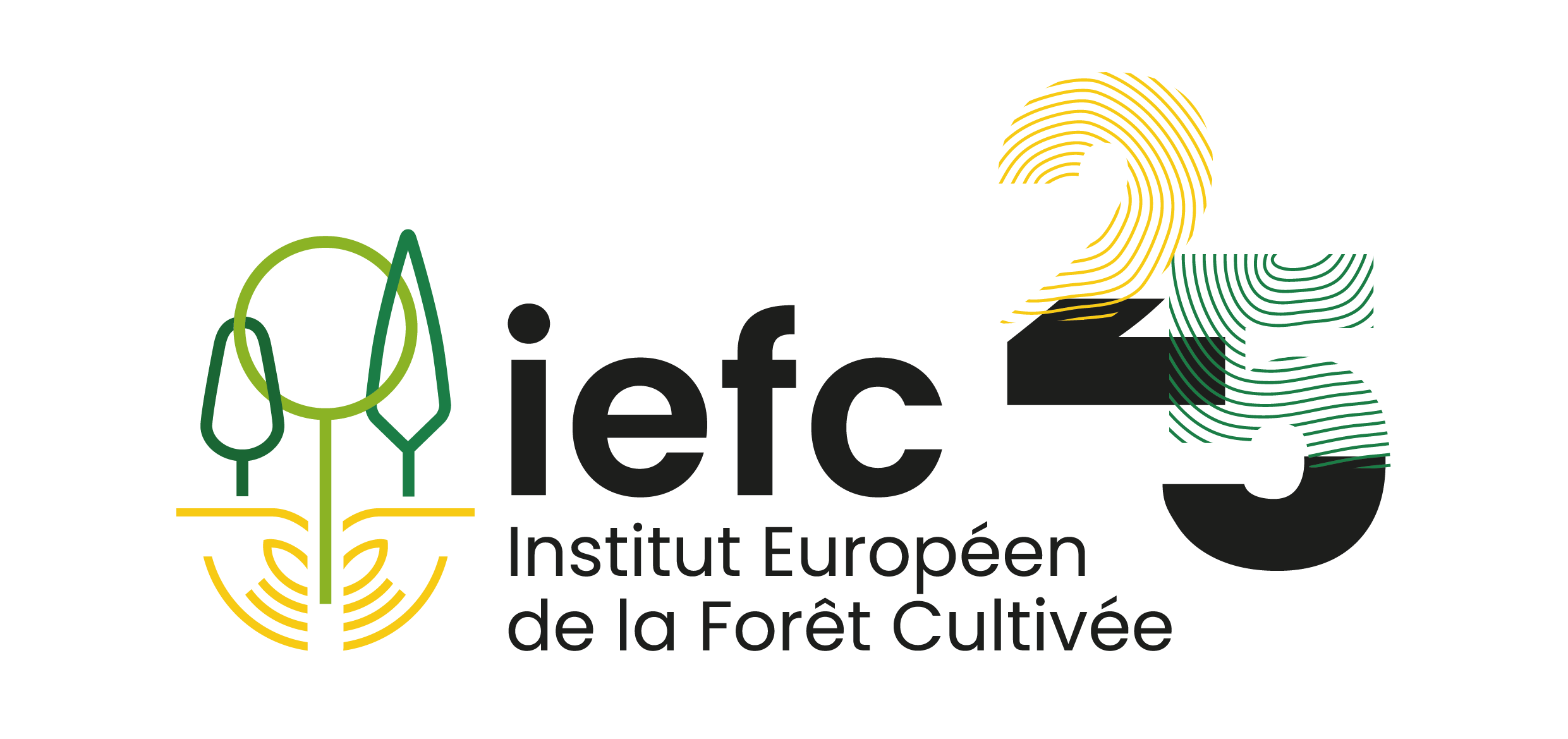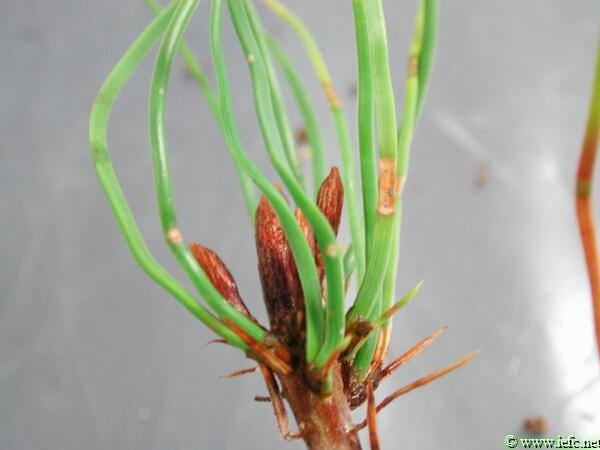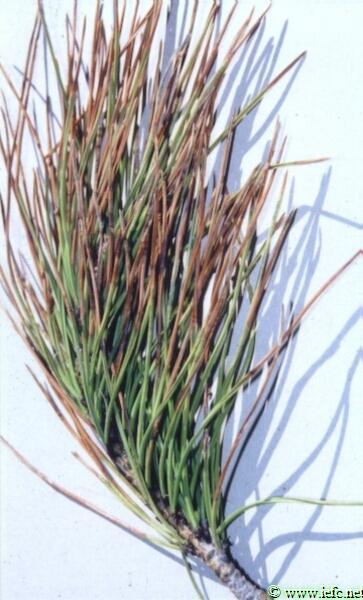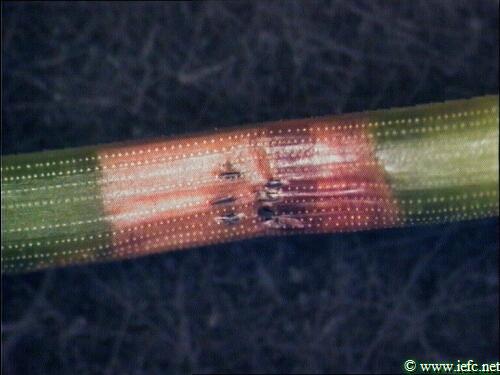Red band disease
Mycosphaerella pini (Ascomycota, Dothideales)
Synonym: Scirrhia pini
Asexual form: Dothistroma septospora
Synonym: Dothistroma pini
Red band needle disease
Host tree
Most pine species, especially Monterey pine (P. radiata), Corsican pine (Pinus nigra subsp laricio), Mugo pine (P. mugo), P. nigra, Ponderosa pine (P. ponderosa), and Japanese black pine (P. thunbergii). P. radiata is highly susceptible to this disease. Maritime pine (P. pinaster) seems not very sensitive. Sometimes Douglas fir (Pseudotsuga menziesii) and larch (Larix) may be infected.
Identification
- In autumn or winter, appearance of yellow spots on needles, changing later on into reddish and brown bands around the needles (Photo 1). The needle will turn brown above the infection point and die (Photo 2).
- In early spring, black spots (stroma) develop within these reddish bands and small fruiting structures can be found on the bands (Photo 3).
- Sometimes the entire needle becomes red and this symptom can be confused with that of other needle diseases (Scirrhia acicola), with pests like Cercopis or Hematoloma species or with a nutrient deficiency.
- Infected needles will fall (old needles as well as new needles).
- In mature trees, the infection is limited to the lower part of the crown, but in the case of repeated attacks the whole crown can be affected.
Damage
-
- Growth reduction (in height and diameter).
- Severe defoliation over several years may kill the tree.
- Damage is more important in young trees than in older ones.
Biology
- In spring two types of fruiting bodies are formed in the black stroma in the infected needles: pycnidia (asexual form) and sometimes perithecia (sexual form).
- During the whole growing season and particularly during humid and warm periods spores are released from the fruiting bodies. Spores are transported by rain droplets and penetrate the healthy needles via the stomata.
Risk factors
- Humid and warm periods in spring and summer.
- Dense and enclosed stands with an abundant soil vegetation.
Pest management
Preventive measurements
- In nurseries, low sowing density and low nitrogen fertilisation is recommended.
- Destruct infected plants in nurseries.
- Use resistant pine species, especially in sites with a high relative humidity (e.g. valleys).
- Avoid high stand densities.
- Favour a good aeration of the stand by applying an early and frequent thinning and a regular management of the undergrowth.
Curative control
- No fungicides are registered in France, Portugal or Spain to control this disease in forests.



